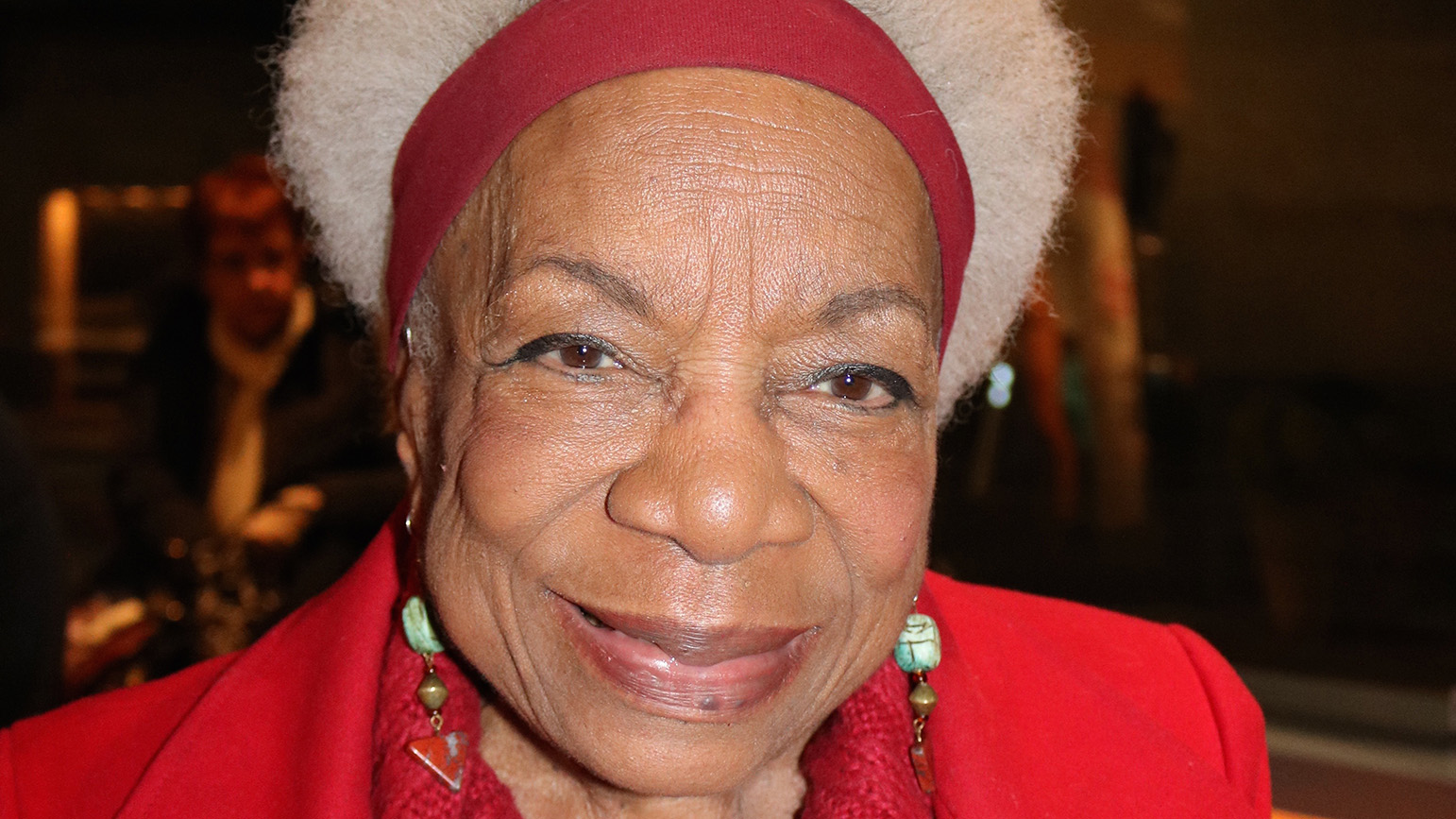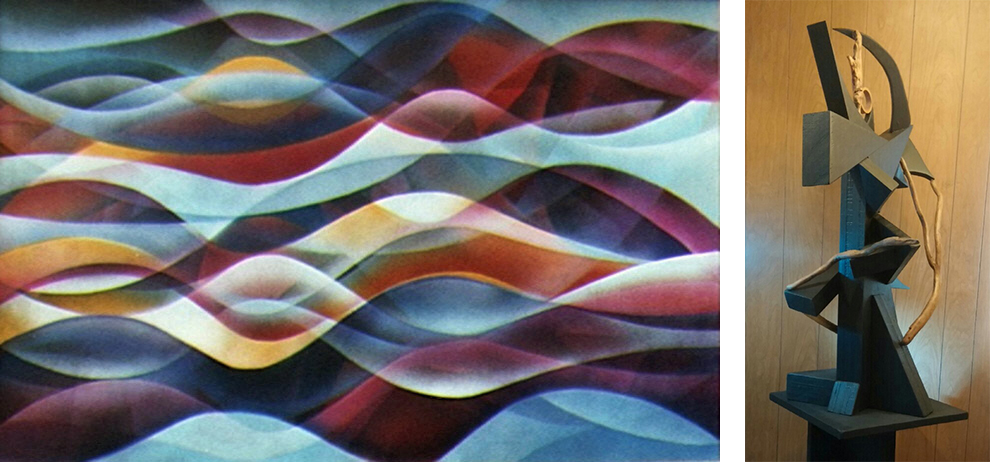
Around Beaver County, alumna Elizabeth “Betty” Asche Douglas (BFA ’51) is warmly referred to as the “First Lady of the Arts” for her lifelong devotion to the arts in her community and beyond. An accomplished visual artist and jazz vocalist, Douglas’ art career began when she enrolled as the first Black student in the Art Department at Carnegie Mellon University, then known as the Carnegie Institute of Technology. At 16 years old, she was also the youngest.
Though neither of her parents had a high school education, both had a love of learning and an appreciation for the arts. “Things done in an artful fashion were part of my family’s lifestyle,” she said. Her mother, the foster daughter of a Baptist preacher, learned to play the piano as a child, and they used to jokingly call her father “the best Black Irish tenor in the world.” Douglas also fondly remembers her father returning home from work in the evening and sitting down to draw.
In third grade, Douglas won an art award—the first of many to follow—for a book poster contest sponsored by the Carnegie Library.
With varied interests and scholastic achievement in everything she studied, she received several scholarship offers from many universities in diverse fields, but decided to attend Carnegie Tech because it was the best scholarship and closest to home.
She only learned later in life that she was the first Black student to attend Carnegie Tech in the Department of Painting and Design. About fifteen years earlier, Elizabeth Catlett, who would go on to become an internationally-acclaimed sculptor, was denied entry to Carnegie Tech—despite having won a scholarship—after the university found out she was Black. (CMU presented Catlett with an honorary doctorate of fine arts in 2008.)
At Carnegie Tech, Douglas continued to pursue multidisciplinary interests, performing in Scotch & Soda musicals, serving as the secretary of the Beaux-Arts Society, and president of the Mortar Board, the women’s honor society. One of her fondest memories is of “Happenings,” held on the weekends in the College of Fine Arts, where students and faculty sang, danced, and performed parody skits and stand-up comedy.
Douglas was two years behind Andy Warhol, or Andy Warhola as he was known then. “I was in the same little gang of outsiders mentored by a couple of the youngest faculty members that he belonged to,” she recalled.

After receiving her degree, Douglas went downtown to get a job in the advertising or display department of one of the big department stores, which was a typical career path for many students who graduated with an art degree from Carnegie Tech, she said. With a distinguished mark on her graduating portfolio, she thought she would surely be hired, but instead she was told her portfolio did not meet department stores’ standards.
Some of her white classmates were shocked to hear this, given the quality of her work. “One of my best friends said, ‘Let me take your portfolio,’ and went downtown with my portfolio in her arm and was offered the job,” Douglas recalled.
After that experience, she got a job at a local Westinghouse factory in order to save up enough money to attend graduate school at the University of Pittsburgh.
Both while at Pitt and Carnegie Tech, Douglas was part of a group of collegians, some of whom were military veterans, that began to challenge segregationist policies in Pittsburgh. At the time, social clubs along Forbes Avenue denied entry to Black people, and Douglas recalls calling Pitt “the cathedral of ignorance” for turning a blind eye to these social issues.
Douglas said that at the time, “diplomats from around the world were coming to places like Pittsburgh, drawing our attention to the fact that if we were of darker complexion, then we were not allowed to go to many of the same places and do many of the same things that other people were. At first, African diplomats were not received with the same open-arm welcoming character that they would be today.”
While policies were shifted to allow African diplomats to attend white-only places, the same rights were not extended to the city’s Black population. One of the memories that sticks out most vividly is when Douglas’ friends dressed up as African diplomats and went to Webster Hall to draw attention to this injustice.
After finishing her graduate degree, a local minister suggested she look at Historically Black Colleges and Universities (HBCUs) in the South for teaching jobs, and she landed her first gig filling in for a professor on sabbatical at Southern University in Baton Rouge. There, she became friends with Reverend T. J. Jemison, who helped organize the nation’s first successful bus boycott. She met Dr. Martin Luther King Jr. when he came to Baton Rouge to speak with Rev. Jemison about the boycott, which served as a model for the much more well-known bus boycott in Montgomery.
After Southern University, she took several other temporary positions at other HBCUs before meeting her husband while teaching at Texas College in Tyler, TX. They got married and moved to Fort Worth, and, finding herself in need of a job, Douglas went to the offices of Sepia magazine, a photojournalistic magazine similar to Life or Ebony, where she was hired to help with magazine layout.
Quickly rising through the ranks, she became an editor for Jonathan Howard Griffin’s series of articles that would be turned into the book Black Like Me, an account of racial segregation in the Jim Crow South and a key text of the Civil Rights movements of the 1960s.

In the 1960s, Douglas returned to Beaver County, where she became a professor at Geneva College and helped to develop the Interdisciplinary Humanities program, which just celebrated its 50th anniversary. Douglas said the program was inspired by a course she took at Carnegie Tech, The Arts and Civilization, which was required for all students. “It was a group-taught course that had historians, and art, and literature, and music historians, and we went through the whole of civilization noting how arts and technology brought civilization forward,” she said.
During this time, she also raised three daughters. “One of the things that I am proudest of having accomplished is having three beautiful, intelligent, and professionally-respected daughters,” she said.
Douglas retired in the late 1990s when her husband became terminally ill, though she still regularly gives guest lectures and performances at Geneva College.
Today, you can find her art at the Douglas Art Gallery in Rochester, PA, which she established with her husband, and in exhibitions around the region and beyond. She currently has work in the “Mister Fred Rogers Fine Arts Juried Exhibition” at the Latrobe Art Center and in “Women of Visions” at the Pittsburgh Center for Arts and Media. Though COVID-19 restrictions have limited some of her performance engagements, she has sung and displayed some of her visual art recently as part of the Bloomfield Garden Club series and at Con Alma in Shadyside.
Over her long career, she has won awards from numerous juried competitions, and her professional career is archived in the National Museum of Women in the Arts. She currently serves on the boards of directors for several community organizations, including the Merrick Art Gallery Associates, the Lincoln Park Performing Arts Charter School, the Guild Council of the Pittsburgh Center for the Arts, the Midland Arts Council, and the Advisory Board of Sweetwater Center for the Arts in Sewickley.
Douglas describes her art as “expressing various levels and elements of being alive” and sees art as integral to shaping a better future.
“I like to encourage young people to discover who they are and what abilities they have that can make a worthwhile contribution to the community,” she said. “Understand that the world that we find is not the world that we must accept or maintain. Instead, always look for what could be better, what could be improved, what could be made more beautiful, what could we take better care of.”




